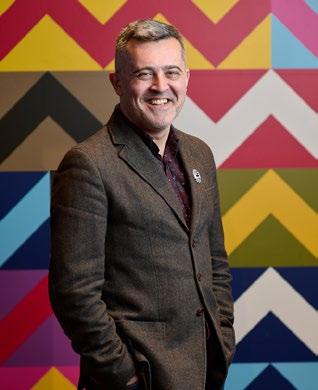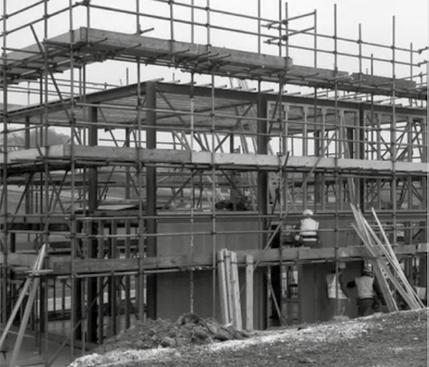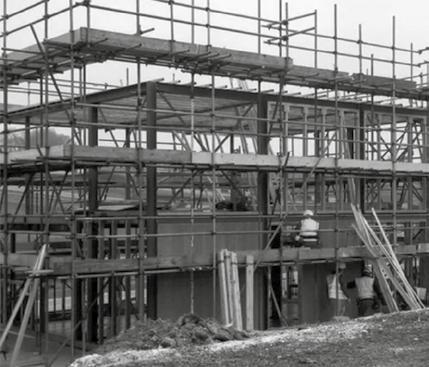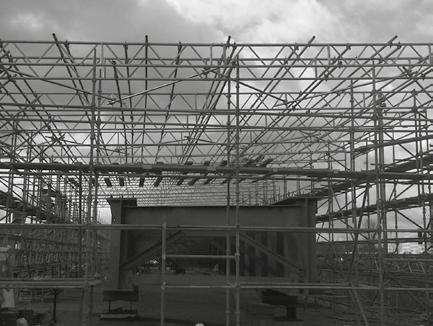
5 minute read
The cost of doing nothing

By Mark Jenkinson, Crystal Associates and SELCC Board Member.
I was hoping to start this first climate column of 2025 on a positive note. Please bear with me – I’ll get there.
As I was finalising my last climate column in early October, Hurricane Milton was about to make landfall in Florida. Once it had passed, at least 16 people had died, more than two million homes and businesses had been without power, and according to a new report from Munich RE, circa US$25bn in insured losses had been realised - the largest from any natural disaster in 2024.
Hurricane Helene, which had made landfall a month earlier, caused 2024’s largest value of total losses - insured and uninsured - at a staggering US$56bn.
As I write this column, there are wildfires burning in Los Angeles County. The death toll has already hit 24, over 144,000 people are under evacuation orders, the strong winds are set to return “pushing explosive fire growth” and the cost is expected to exceed US$135 billion. The five main fires burning across the County cover over 32,000 acres or 129 square kilometres. this is bigger than the boroughs of Greenwich, Bexley and a large part of Lewisham combined!
Aside from the significant impact on people’s lives and businesses, the total expected cost from these three disasters alone is thus around US$216bn or £177bn.
Could this money be spent in a better way in the form of prevention? Maybe it could.
Last July, the London Climate Resilience Review published its report into London’s preparedness for climate impacts including heatwaves, floods, droughts, wildfires, storms, sea level rise and subsidence.
Alongside immediate dangers to people’s lives and livelihoods, the Review found that government and businesses have not adequately planned for the disruption caused when severe weather impacts “cascade” through critical systems like healthcare, transport, water and energy. The recent cold snap, for example, showed how limited our gas reserves are with “less than a week of gas demand in store.”
The Review didn’t put a figure on it, however, a London School of Economic report in 2022 estimated the annual cost of climate change damage in the UK to be around 1.1% of GDP, i.e. £13bn, increasing to 3.3% or over £39bn by 2050, if we do nothing.
In 2021, the Office for Budget Responsibility estimated a net investment of the UK reaching net zero by 2050 to be £321bn, or just over £10bn per year.
Emma Howard Boyd CBE, Chair of the London Climate Resilience Review, and who I met in October, said: “We are entering a new era. In 2024, even as El Niño fades, we are set for another record-breaking year of deadly heatwaves, wildfires and storms.”
This sentiment was confirmed by the European Copernicus climate service in its report released in early January, claiming that 2024 was the first calendar year to pass the symbolic threshold of 1.5 degrees, as well as the world's hottest on record. 2025 is set to be even hotter.
So, what are we doing at the Chamber doing to play our part to mitigate the above? To paraphrase Ian Dury and the Blockheads, here are some reasons to be cheerful.
SELCC Sustainability Group
At the end of November, we held the third meeting of the SELCC Sustainability Group – an outcome of the Greener Greenwich Summit 2024 (GGS24) –kindly hosted by Ravensbourne U niversity London.
The Group got to hear and see how Ravensbourne is decarbonising its three sites on the Greenwich Peninsula. We visited its biomass boiler, hearing how efficient it is and its benefits over using gas. We also experienced the impressive views – see the ‘team’ photo.

We also heard from Transport for London’s Smart Commuting Toolkit which includes a staff travel survey – if you’d like a copy drop me a line.
Our next meeting will be at Royal Museums Greenwich – see the next edition for a summary.
Green Travel Plan webinar
In November, the Chamber hosted the webinar ‘How to develop and implement a green travel plan’.
Building on his presentation and the associated ambitious goal set at the GGS2024, Simon Earp, the University of Greenwich’s Transport & Green Travel Manager revealed how the University is tackling the challenges of inter-campus travel and accommodating international students while reducing carbon emissions.
Simon also explained what organisations large and small could do to green their travel. We heard from the participants themselves, including Mercedes Gale Parr, Founder of sustainable weddings and events company, 4YaParty. Mercedes invested in an electric van and decided to limit the area served by her company to a 45-mile radius; this actually led to a growth in business while helping to make her company and its services greener.
If you missed the webinar, fear not. You can catch it on the Chamber website along with other recorded webinars.
A Carbon Footprint Action Plan
The third and latest cohort and webinar programme of Green Business Action London finished in December.
Ten local businesses took part, including the Chamber, and its now time to complete the carbon management tool.
The associated ambition from the GGS24 was that all businesses should complete a carbon footprint action plan. Given we have around 57,000 SMEs a cross all five boroughs covered by the SE London Chamber (Royal Greenwich, Lewisham, Bromley, Bexley and Croydon), we clearly have some way to go. Drop me a line if you want to be involved in a future cohort.
Best of Royal Greenwich Business Awards
Over the last few months, I’ve had the honour to be a judge in the Best of Royal Greenwich Business Awards. Not surprisingly, my particular focus has been on the Greener Greenwich category, and I’ve been impressed with the amazing ‘green’ activities of a wide range of organisations. I’m looking forward to the Awards ceremony on 7 February.
I’m also keen to hear what good things businesses are doing across the other boroughs so please get in touch.
What’s next?
I was reminded earlier today about the 2021 film titled ‘Don’t Look Up’. If you haven’t seen it, the film tells the story of two astronomers attempting to warn humanity about an approaching comet that will destroy human civilisation; it is a satire of political and media indifference to the climate crisis. The film is possibly even more pertinent today!
The Review didn’t put a figure on it, however, a London School of Economic report in 2022 estimated the annual cost of climate change damage in the UK to be around 1.1% of GDP, i.e. £13bn, increasing to 3.3% or over £39bn by 2050, if we do nothing.❜❜
Therefore, we can’t afford to do nothing. The recent disasters in Florida, Los Angeles and closer to home, demonstrate that.
So, we at the Chamber will continue to roll out our green activities throughout 2025, supporting members and other businesses and organisations across the five boroughs.
As ever, keep an eye on our website, get involved in our events and play your part. And we should have even more reasons to be cheerful!



Rochester Scaffolding Co Ltd
•
•
•
•
•
•
Rochester Scaffolding Co Ltd
•
Rochester Scaffolding Co Ltd
The
•
•
•
•
•
•
•
•
•
•
Large
Large
Large
















